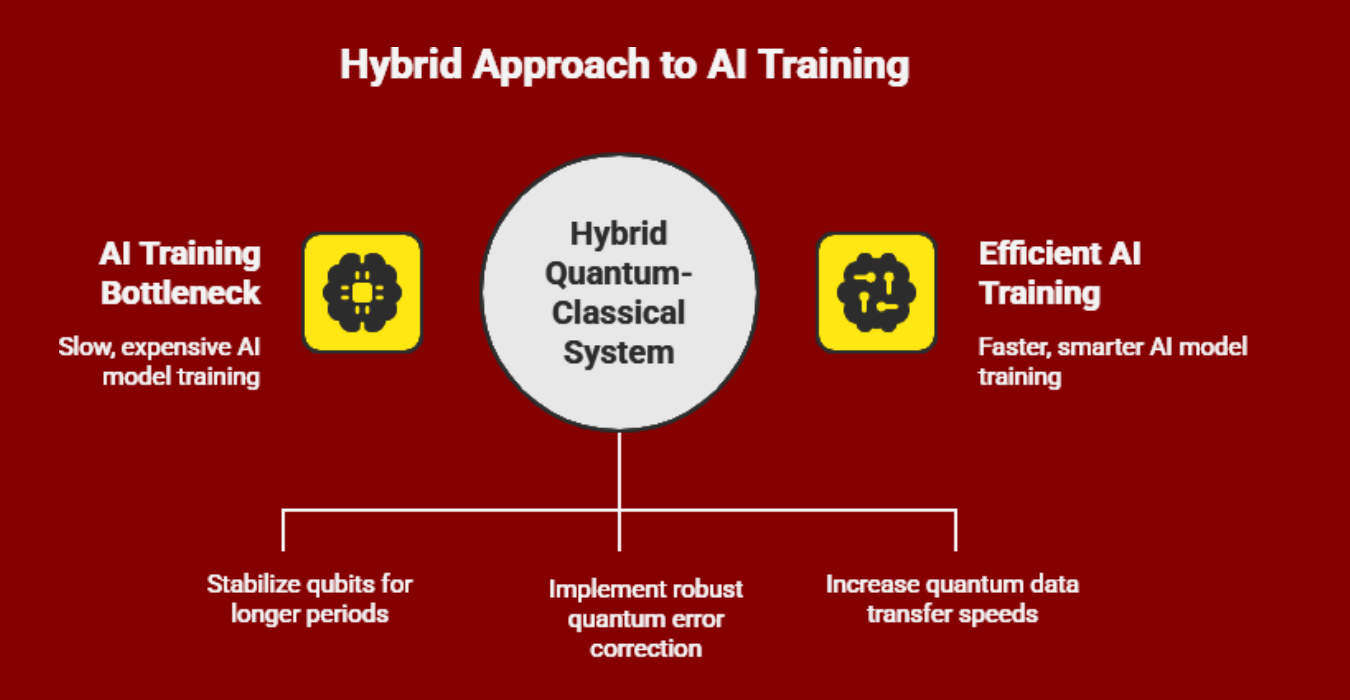
Quantum Computing for AI Training: Can It Solve the 100-Day Problem?
The potential of quantum computing for AI training is a topic of intense speculation. We’ve all seen what current AI models like GPT-4 can do, but behind these magical abilities is an enormous amount of computing power and time. So it’s natural to ask: Can quantum computers really help? In theory, yes. In practice… not quite yet.
⏳ The Scale of the Challenge: The 100-Day Problem
Training a model like GPT-4 likely took around 25,000 NVIDIA A100 GPUs running nonstop for 90 to 100 days. This massive resource requirement, often called the “100-day problem,” highlights the limitations of classical computing and raises questions about the future of large-scale artificial intelligence development.
3 Hurdles for Quantum Computing for AI Training
1. Unstable Qubits
Quantum computers use powerful but incredibly sensitive “qubits.” Keeping millions of them stable for the weeks required for AI training is a massive challenge that current hardware cannot overcome.
2. Overwhelming Error Correction
Making qubits reliable requires combining thousands of physical qubits to create one stable “logical” one. We are still very far from having the millions of logical qubits needed for today’s large models.
3. Crippling Data Bottlenecks
Even with powerful hardware, today’s quantum computers have very slow input/output (I/O) speeds. Simply loading the massive datasets required for **quantum computing for AI training** would cancel out any speed advantages. (Read more on quantum research)
💡 The Realistic Future: A Smarter, Hybrid Approach
The practical path forward for **quantum computing for AI training** isn’t a full takeover, but a hybrid model:
- Classical Computers will still do the heavy lifting—managing data and running most of the training.
- Quantum Processors may help with specific, tricky tasks, like solving complex optimization problems or fine-tuning parts of a model.
Think of it like using a powerful specialist for the most difficult parts, while your main system handles the rest. This approach leverages the strengths of both technologies.
What This Means for Business Leaders
If you’re a decision-maker wondering when to invest in quantum technologies, the advice is simple: don’t rush, but don’t ignore it either.
Quantum computing is a long-term investment. The real progress will come from smart integration, not sudden disruption. Understanding the current state of **quantum computing for AI training** helps you make informed strategic bets on the future without overinvesting in today’s hype.
TL;DR: The Takeaway
The use of **quantum computing for AI training** won’t solve the “100-day problem” anytime soon. However, with a hybrid approach, it could eventually help make training smarter—not just faster.
🚀 Want to explore how a hybrid AI strategy could fit your business?
Let’s talk about what’s real, what’s possible, and where you can get ahead.


